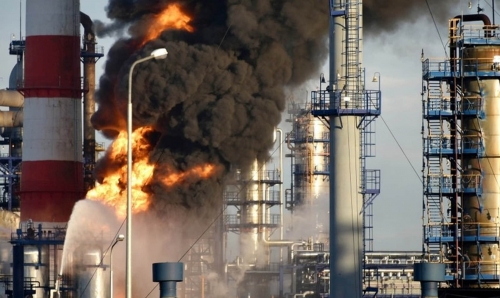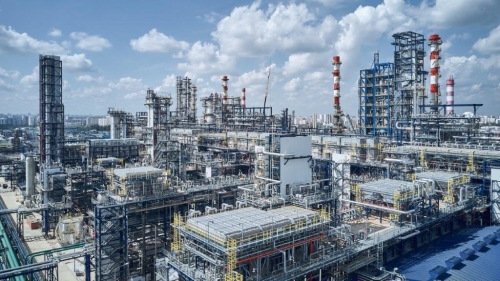The oil market has all but abandoned the hope of a re-balancing any time soon, with the re-emergence of a pricing structure that signals investors expect a glut to endure into next year.
The return of a deep contango -- when oil prices for immediate delivery are lower than forward contracts -- comes days after several Wall Street banks warned investors of a deteriorating outlook for 2018 because of strong U.S. shale production growth and the rising output in Nigeria and Libya.
The weakness is particularly visible in the widening price difference between Brent crude for delivery in December 2017 and December 2018 -- a popular trade known in the industry as Dec-Red-Dec. The spread fell as low as minus $1.49 a barrel early on Friday, down from plus $1 a barrel two weeks ago.
“Brent spreads are getting clobbered,” said Amrita Sen, chief oil market analyst at consultants Energy Aspects Ltd. in London. “The Atlantic Basin is awash in light crudes from Nigeria and Libya.”
Royal Dutch Shell Plc. this week lifted its force majeure on Forcados crude from Nigeria after a disruption that lasted 472 days. The return of Forcados will add another 200,000-250,000 barrels a day of high quality, light and sweet crude into the Atlantic just as regional refiners are already awash with similar grades from the U.S., North Sea and Africa.
Spread Plunge
The Dec-Red-Dec spread is now trading at its weakest since Nov. 30., when OPEC agreed to cut output in an effort to bring oil inventories down to their five-year average. The spread traded at plus $1.56 a barrel in late February amid hopes the cartel, which controls 40 percent of the world’s output, would successfully bring stockpiles down. But the spread came under pressure as those inventories continued to build through March, before falling in line with seasonal patterns.
As investors worried about the re-balancing process, trading volumes in the Dec. 2017-Dec. 2018 spread surged to a record high on Thursday, according to exchange data compiled by Bloomberg. The Brent spread saw the equivalent of 65 million barrels traded, and the WTI equivalent traded 41 million barrels -- far exceeding their average trading volumes over the prior two weeks.
“The sentiment is bearish,” said Tamas Varga, an analyst at brokerage PVM Oil Associates Ltd. in London.
Since the Organization of Petroleum Exporting Countries and allies agreed to extend the production cuts for another nine months, investment banks including JPMorgan Chase & Co., Morgan Stanley, HSBC Holdings Plc., UBS AG and Barclays Plc have warned about a deteriorating outlook for next year. The banks have almost unanimously blamed rising U.S. shale production and fears about OPEC’s exit strategy from its cuts.
U.S. crude production will average more than 10 million barrels a day for the first time in 2018, breaking a record almost five decades old, according to the Energy Information Administration.
“The outlook for 2018 is starting to look troublesome,” Martijn Rats, oil strategist at Morgan Stanley in London told investors in a note after the OPEC meeting.

%20(1).png)



